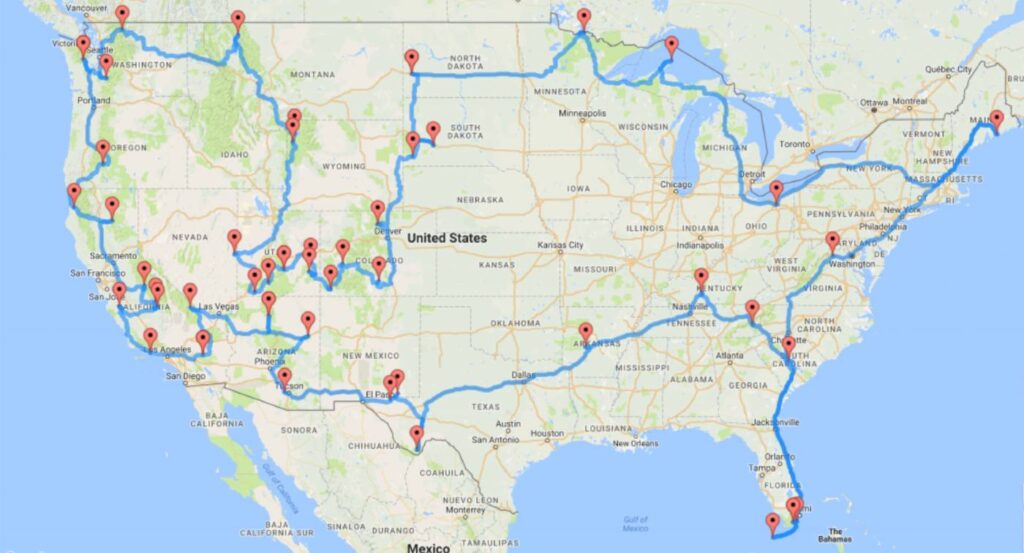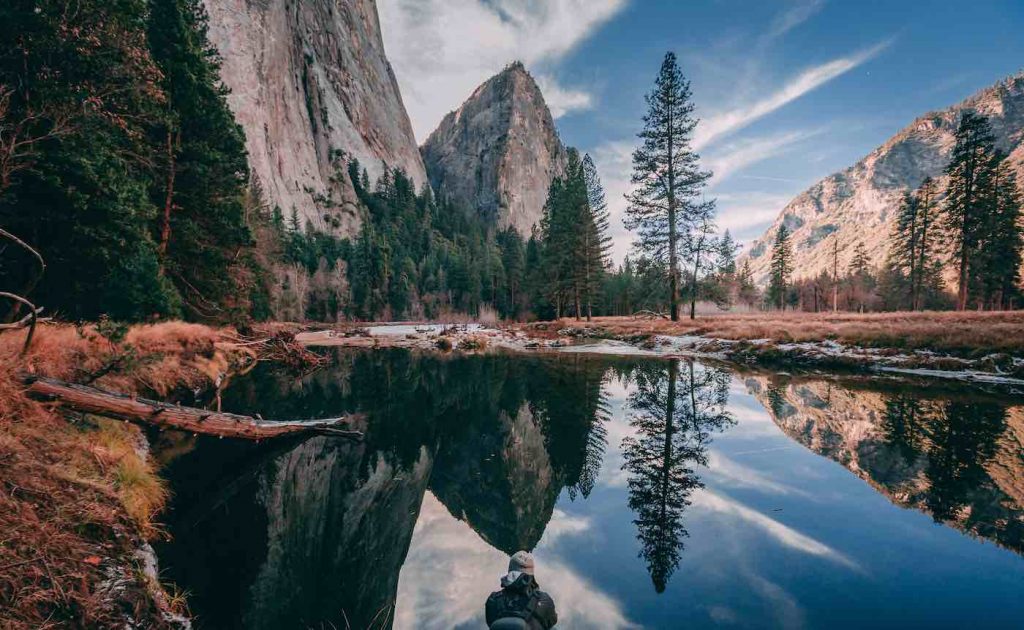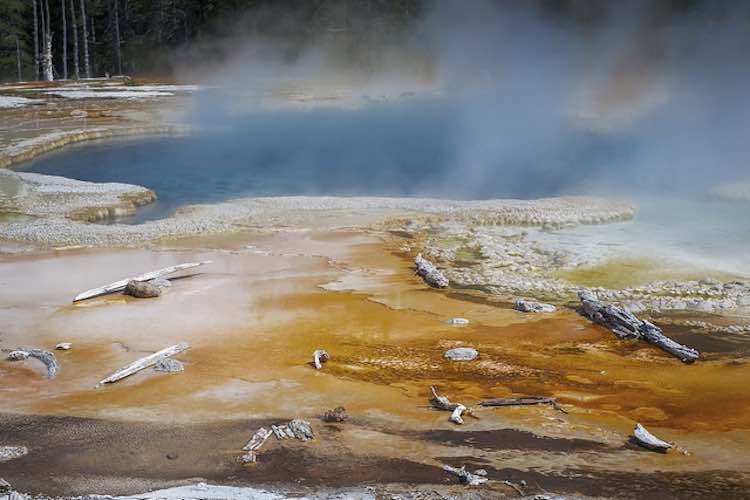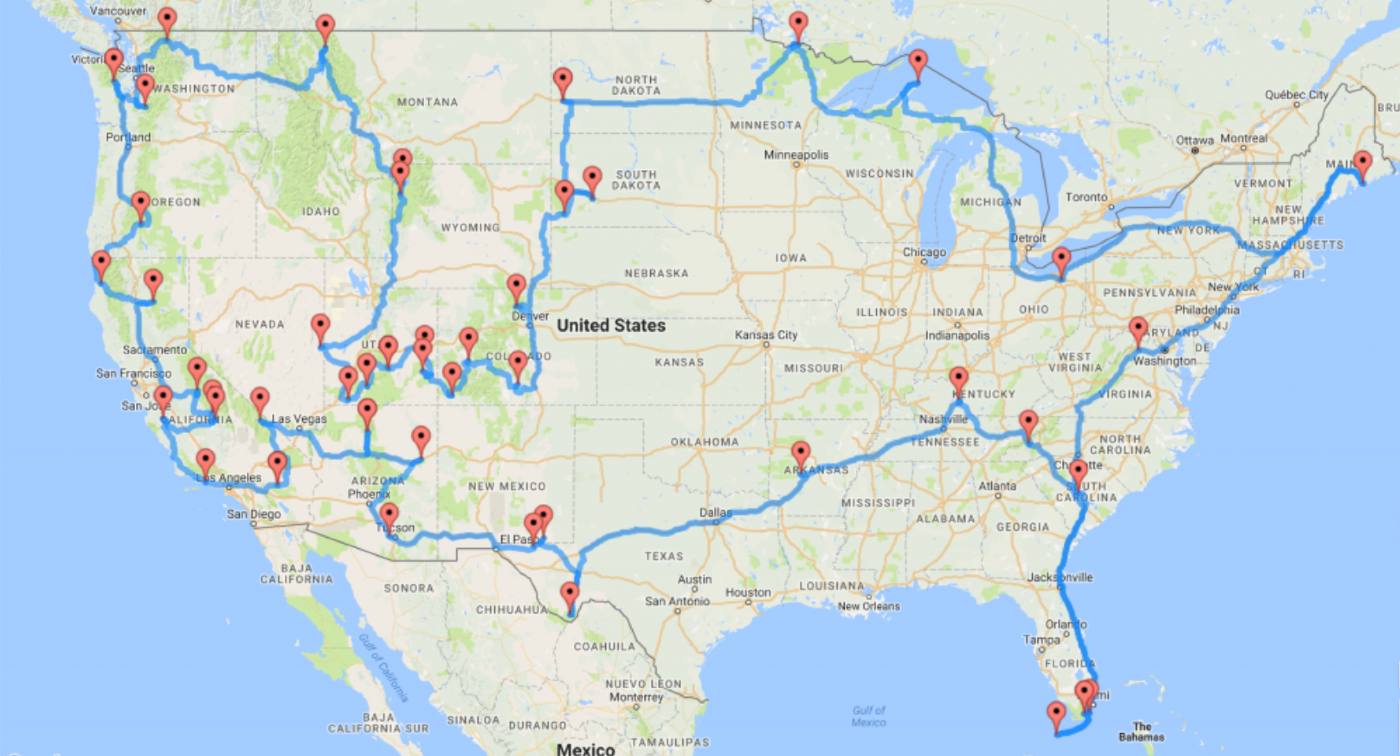
Smart algorithms are used to make calculations for data-driven science in a dizzying number of ways, but one man has used them to build a once-in-a-lifetime American experience.
Dr. Randy Olson has created an algorithm that planned the optimal and ultimate U.S. National Parks road trip, featuring the most expedient route to visit the original 47 National Parks in the continental United States.
The modern National Parks System was inspired in part by the increasing popularity of the automobile, and the U.S. interstate highway system was built to run through as many of the U.S. Parks as possible.
As one can see in the Ken Burns documentary The National Parks, by the 1960s, taking your Ford or Chevy on a trip across the West was the quintessential American vacation, and the crown jewel of the tourism industry.
The trip in total comes out to 14,498 miles (23,333 km), not counting rest stops, and will take about two months driving at what Olson described as a “breakneck pace,” though anyone looking for an enjoyable road trip will want to take in the scenery at each park, and realistically need more like 3-4 months to do such an adventure justice.
Olson, who is the Chief Data Scientist at FOXO Bioscience, described the trip as a “circle,” by which he meant you could jump on the route at any point and go either way to visit the next 46 Parks. It is not by any means a circle around the perimeter of the US.
For instance, when starting your travels by going westward from Minnesota’s northern lakes, the route plunges southward from North Dakota all the way down to the border between New Mexico and Colorado. It snakes westward into the Great Basin in Nevada, and climbs right back up again to Glacier NP on the border with Canada.
This massive detour is on account of one of the five or six mega states in the National Park System, Utah, and its central location. But beyond that the trip is well planned as one can start at any point and face the same amount of driving as if they’d started anywhere else.
The fun details
Olson’s blog post about his route was a popular topic with his readers, and they enthusiastically flooded the comment section with suggestions, calculations on gasoline costs, advantages of RVs vs traditional sedans for better gas mileage, and other details.
One commenter mentioned that cutting out the Florida parks, and Acadia National Park in Maine, would save a ton of time.

Another popular discussion was regarding other types of land units managed by the National Parks Service—such as National Scenic Riverways, National Monuments, National Lakeshores. These define the spirit of the NPS, which is not only to protect those lands that the nation values most, but those that individual communities value too.
Other suggestions for optimizing your trip include this detour through New York to Maine, which would run through the mountains instead of the interstate, or this resource for finding free campsites online managed by the U.S. Bureau of Land Management—which can save travelers many dollars in accommodations.
CHECK OUT: Americans Choose the Best Road Trip Tunes Of All Time — For Your Summer Playlist
Olson points out that you would need to have a flying car or airplane to efficiently visit the 12 parks located in America’s island territories, or in Alaska where there are eight parks, but his road trip does include the Channel Islands and Dry Tortugas, which require the use of boats for car and personal transport.
The list of 47 National Parks, in order:
Grand Canyon National Park, Arizona
Petrified Forest National Park, Arizona
Saguaro National Park, Arizona
Guadalupe Mountains National Park, Texas
Carlsbad Caverns National Park, New Mexico
Big Bend National Park, Texas
Hot Springs National Park, Arkansas
Mammoth Cave National Park, Kentucky
Great Smoky Mountains National Park, Tennessee
Everglades National Park, Florida
Dry Tortugas National Park, Florida
Biscayne National Park, Florida
Congaree National Park, South Carolina
Shenandoah National Park, Virginia
Acadia National Park, Maine
Cuyahoga Valley National Park, Ohio
Isle Royale National Park, Michigan
Voyageurs National Park, Minnesota
Theodore Roosevelt National Park, North Dakota
Badlands National Park, South Dakota
Wind Cave National Park, South Dakota
Rocky Mountain National Park, Colorado
Great Sand Dunes National Park and Preserve, Colorado
Black Canyon of the Gunnison National Park, Colorado
Mesa Verde National Park, Colorado
Canyonlands National Park, Utah
Arches National Park, Utah
Capitol Reef National Park, Utah
Bryce Canyon National Park, Utah
Zion National Park, Utah
Great Basin National Park, Nevada
Grand Teton National Park, Wyoming
Yellowstone National Park, Wyoming
Glacier National Park, Montana
North Cascades National Park, Washington
Mount Rainier National Park, Washington
Olympic National Park, Washington
Crater Lake National Park, Oregon
Redwood National and State Parks, California
Lassen Volcanic National Park, California
Yosemite National Park, California
Kings Canyon National Park, California
Sequoia National Park, California
Pinnacles National Park, California
Channel Islands National Park, California
Joshua Tree National Park, California
Death Valley National Park, California
One final tip

Besides a car and a camera, the most important thing you need is to get yourself the National Parks Passport, which allows you to collect stamps (like visas) at every visitor center, and the America the Beautiful Pass that, for a one-time fee, allows free entry into almost every NPS outpost—it’s $80 for one year.
Also, if you, like probably most of us, can’t create an algorithm on your own, RouteXL.com will optimize other road trips for you with up to 20 stops for free, and more stops for a fee.
GET Your Favorites Ready for an Epic Journey By Sharing This Story…




















